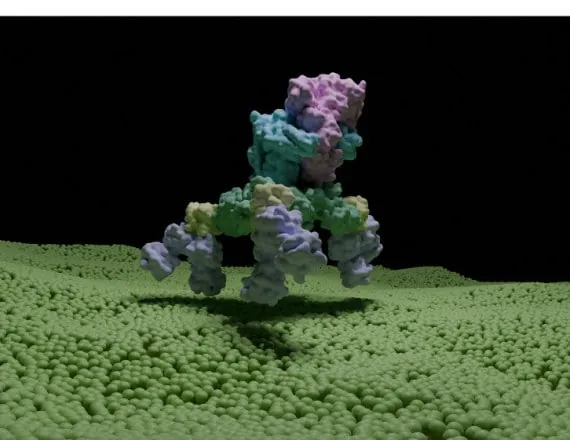
Unlocking the Secrets of Botulinum: How This Deadly Toxin Travels and Operates
2025-08-28
Author: Benjamin
A Breakthrough Discovery with Nobel-Winning Technology
For the first time ever, scientists have meticulously examined the intricate protein structure that both protects and releases the notorious botulinum toxin, which gained unwanted fame during a summer of health scares. Researchers at the University of Stockholm employed cutting-edge Cryo-Electron Microscopy, a Nobel Prize-winning technique, to explore the molecular machinery of the Clostridium botulinum bacterium.
What Is Botulin and Why Is It So Dangerous?
Botulinic toxins are among the most lethal substances known to humanity. According to guidelines from Italy’s Istituto Superiore di Sanità, just one gram of pure botulinum toxin can potentially kill 14,000 people through ingestion, 1.25 million through inhalation, and a staggering 83 million via injection. Clostridium botulinum is commonly found in soil and water, where it can contaminate food through spores.
The Risks of Home Food Preservation
Foodborne botulism, primarily linked to improperly canned or preserved foods, poses serious risks. These hazardous conditions often occur when home cooks prepare vegetable preserves that lack adequate acidity, inadvertently creating an environment conducive to the growth of the botulinum bacteria. The disturbing reality is that many rely on heirloom family recipes without understanding the science behind food preservation.
Recognizing the Symptoms of Botulism
Symptoms of food botulism can be grave but are often delayed, appearing 24 to 72 hours after consuming contaminated food. Initial gastrointestinal discomfort can escalate to serious issues like blurred vision, drooping eyelids (ptosis), difficulty speaking and swallowing, and in severe cases, paralysis of facial muscles and respiratory failure. These grave outcomes occur when the botulinum toxins disrupt nerve signals, leading to paralysis that can only be reversed through treatment with antitoxins.
A Complex Protein Machine
Pål Stenmark, a neurochemistry professor at the University of Stockholm, explains that the toxin doesn’t operate in isolation. Instead, it travels within a vast protein complex made up of 14 components. This complex shields the toxin from the harsh environment of the digestive tract, facilitating its journey from the intestine to the bloodstream, where it can then exert its lethal effects.
Towards Innovative Treatments and Antidotes
Utilizing Cryo-Electron Microscopy, the research team studied the botulinum toxin in relation to a muscle-relaxant medication (neurobloc) similar to Botox, which is popular in cosmetic treatments. The resulting high-resolution images allow for a deeper understanding of the toxin's structure and pave the way for potential new therapies. This groundbreaking discovery, published in *Science Advances*, could lead to the development of novel antitoxins that neutralize the botulinum toxin, enhancing both therapeutic applications and safety measures.









 Brasil (PT)
Brasil (PT)
 Canada (EN)
Canada (EN)
 Chile (ES)
Chile (ES)
 Česko (CS)
Česko (CS)
 대한민국 (KO)
대한민국 (KO)
 España (ES)
España (ES)
 France (FR)
France (FR)
 Hong Kong (EN)
Hong Kong (EN)
 Italia (IT)
Italia (IT)
 日本 (JA)
日本 (JA)
 Magyarország (HU)
Magyarország (HU)
 Norge (NO)
Norge (NO)
 Polska (PL)
Polska (PL)
 Schweiz (DE)
Schweiz (DE)
 Singapore (EN)
Singapore (EN)
 Sverige (SV)
Sverige (SV)
 Suomi (FI)
Suomi (FI)
 Türkiye (TR)
Türkiye (TR)
 الإمارات العربية المتحدة (AR)
الإمارات العربية المتحدة (AR)